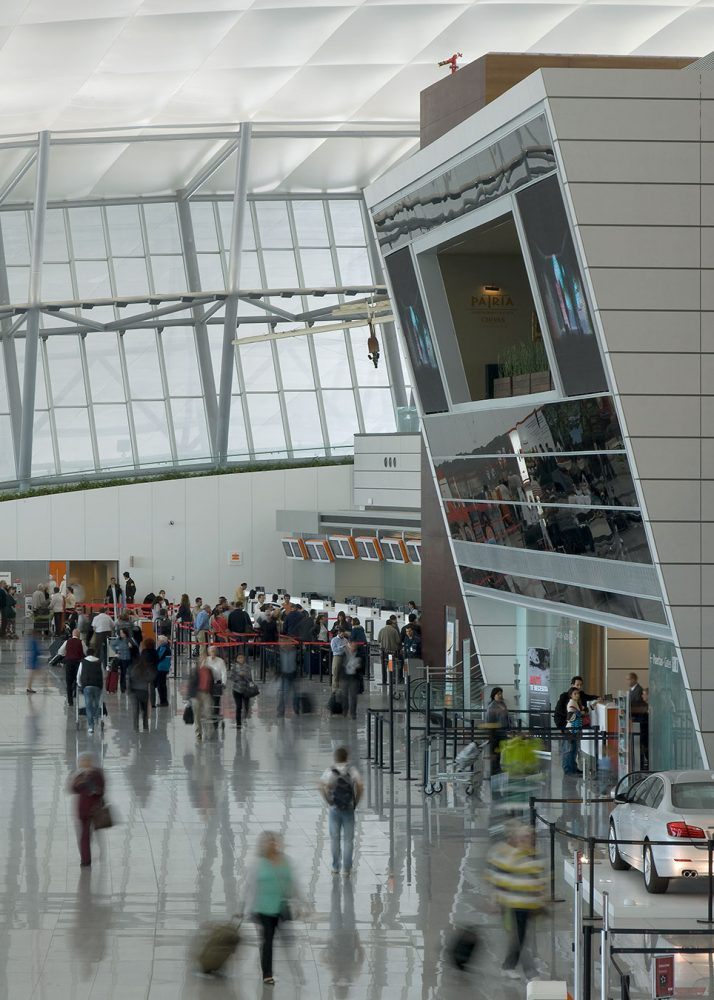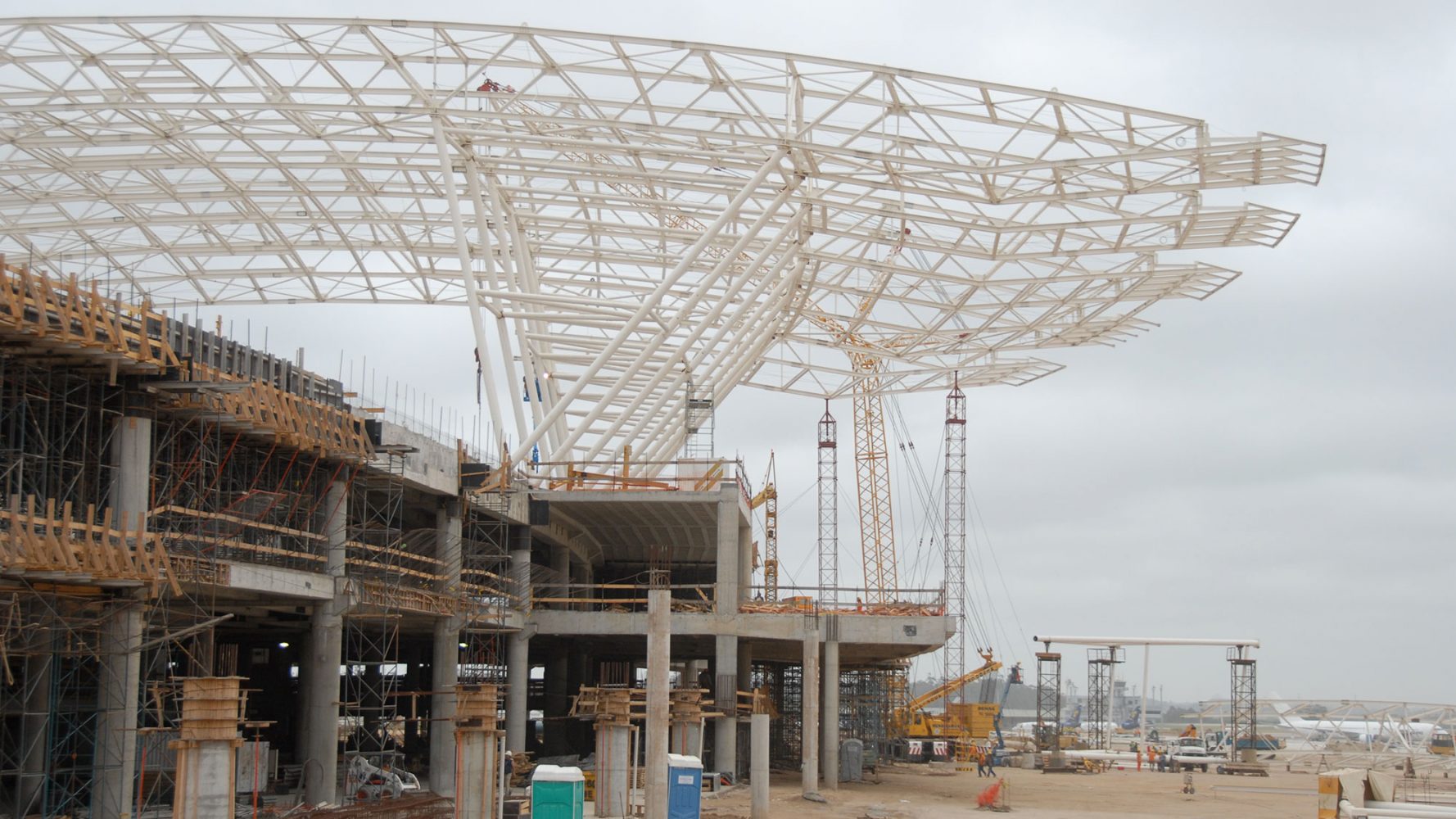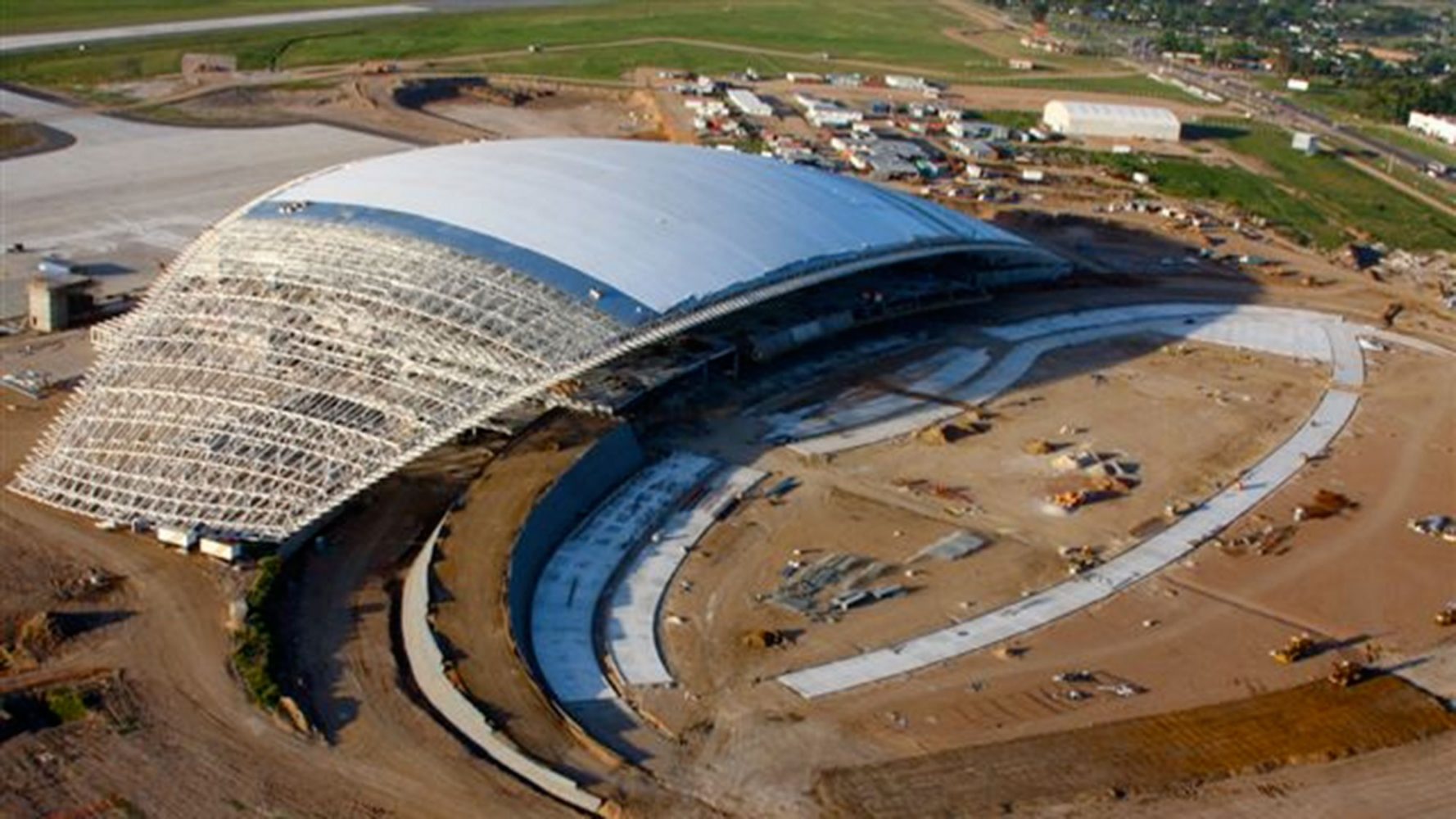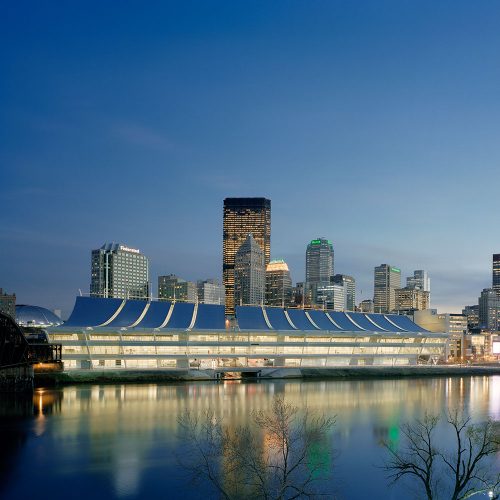Carrasco International Airport, New Terminal
Seen from the air as a wing that spans 365 meters over the new terminal, the building’s iconic character also draws from the rolling hills and dunes that typify Uruguay’s natural landscape.
Carrasco International Airport, officially known as “Aeropuerto Internacional de Carrasco General Cesareo L. Berisso,” serves Montevideo, the capital city of Uruguay. With two million passengers per year, it is the only airport in the country that provides year-round international connections. As a result, it carries great symbolic value as the “front door” for many visitors to the country. Rafael Viñoly Architects’ design expanded and modernized the existing facilities with a spacious new passenger terminal to expand capacity and spur commercial growth and tourism in the region.
The new terminal design, with prominence placed on public zones, is based on the regional tradition of seeing off family and friends before a flight. These public zones include the secure runway-side concourse as well as the fully accessible roadside departure hall and terrace, providing amenities such as open space, natural light, restaurants, retail, and landscaping, all housed beneath a gently curved roof 365 meters (1,200 feet) in length. A public, landscaped terrace occupies the second floor above the departure level, providing views of the runway and the main public concourse. The design also features a restaurant and space for commercial and cultural use. Arrivals and departures are separated by floor, with arrivals on the ground level, departures on the first floor, and vehicular access roads that service each level independently. This sweeping white roof, a single curve starting from the ground, is influenced by the context and regional architecture.
The gentle curve and low profile of the airport’s monolithic roof is inspired by the rolling dunes along Uruguay’s coastline. While the architectural solution for the Carrasco International Airport is modern in its conception of space, function, and structure, the roof is regionally inspired and draws its strength from its relationship to the surrounding topography. The building represents Uruguay’s transformation from an important regional country to an international destination for commerce and tourism.



























